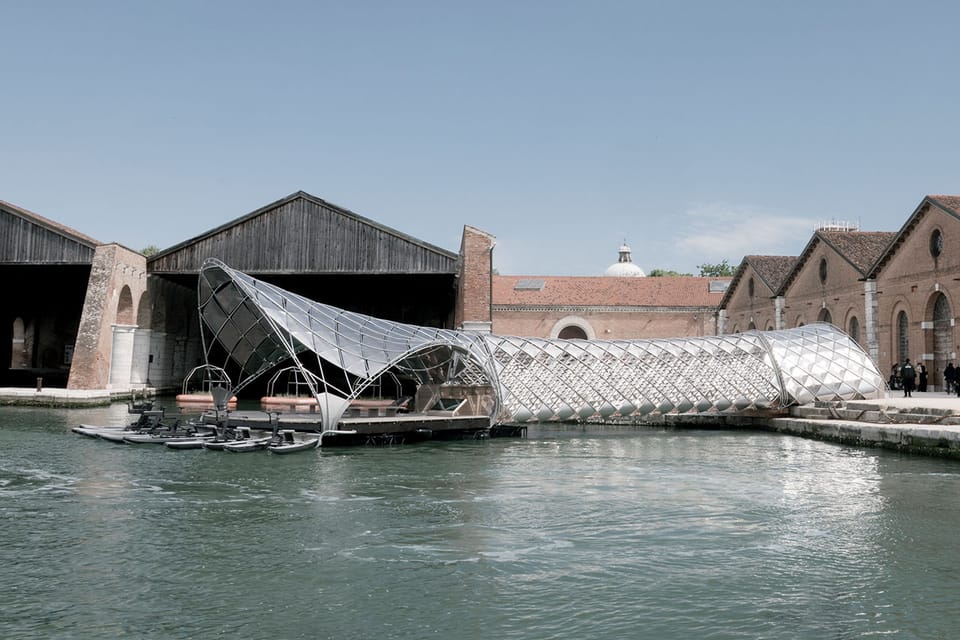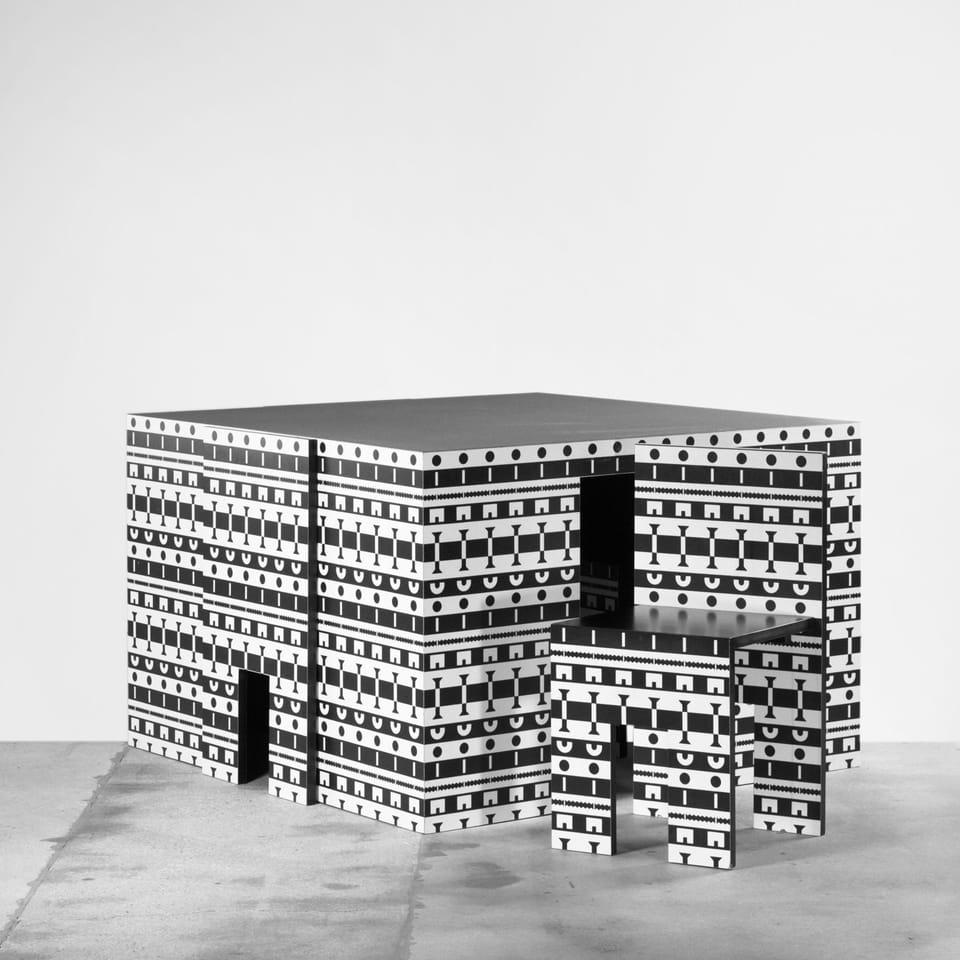The Boatyard Hotel: A Symphony of Architecture and Nature in Suzhou's Riverside Sanctuary
Nestled along the tranquil banks of Suzhou’s waterways, the Boatyard Hotel emerges as a masterclass in architectural harmony, blending Jiangnan’s historical essence with modernist design.
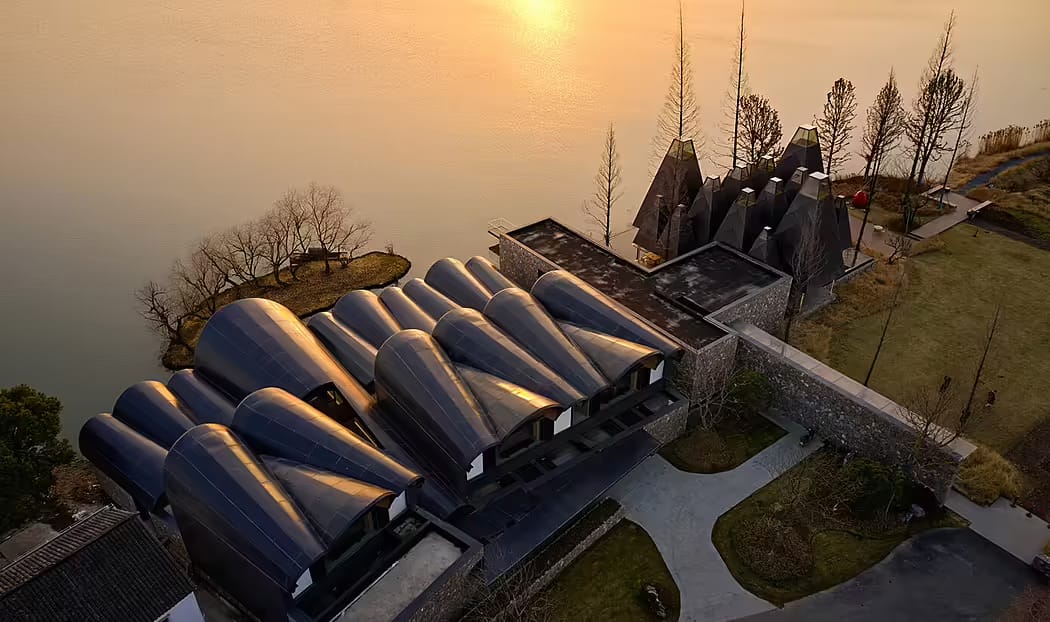
Nestled along the tranquil banks of Suzhou’s waterways, the Boatyard Hotel emerges as a masterclass in architectural harmony, blending Jiangnan’s historical essence with modernist design. Designed by WJ Studio and completed in 2023, this retreat redefines serenity through its poetic integration of structure, landscape, and cultural narrative. By transforming the concept of a "docked boat" into a spatial experience, the hotel invites guests to immerse themselves in a living ink painting, where every corridor and window frame becomes a brushstroke in a larger natural composition.
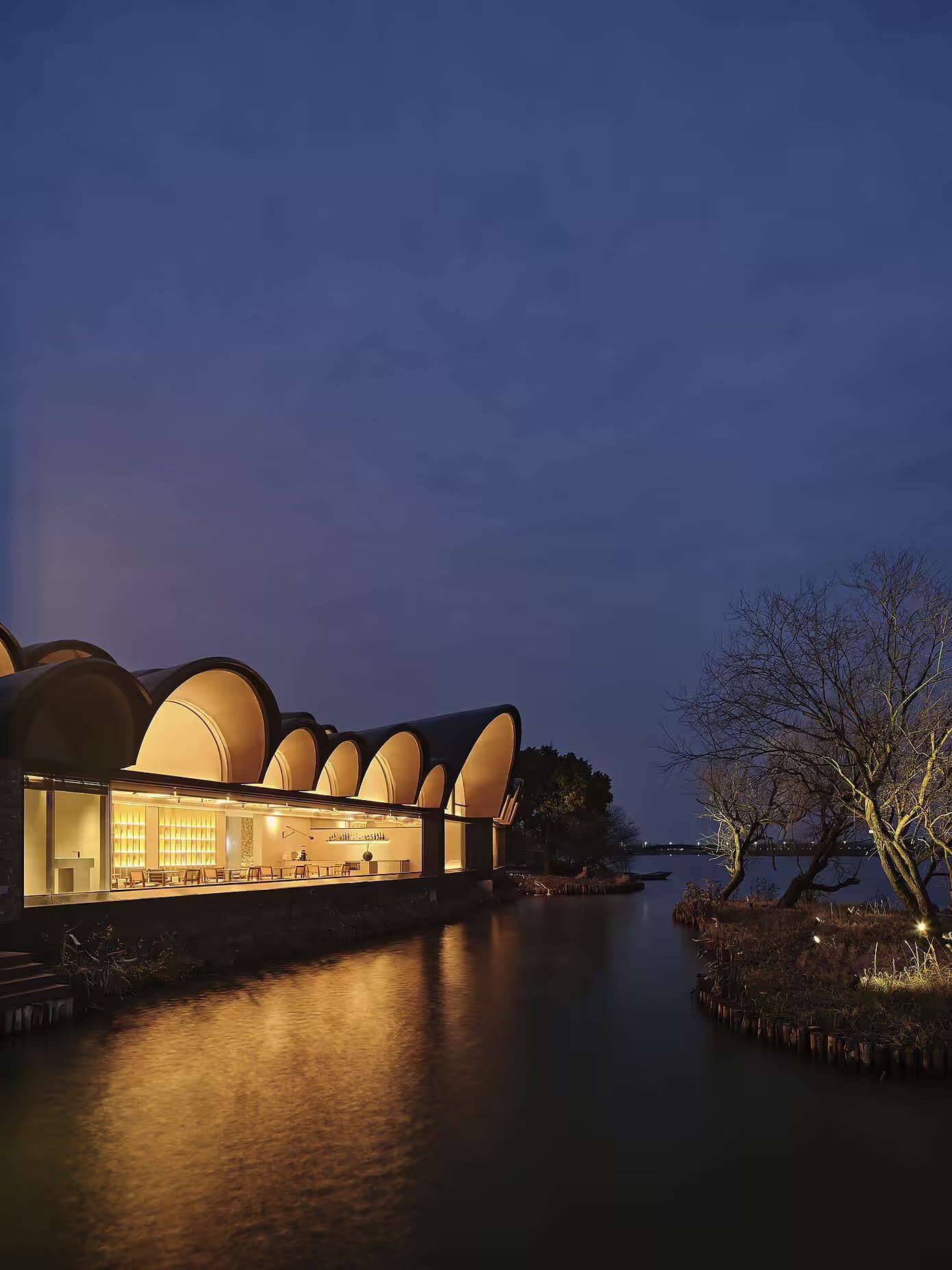
Architectural Philosophy: Bridging Time and Terrain
The Metaphor of the Docked Boat
At the heart of the Boatyard Hotel’s design lies the metaphor of the crow-top boat—a traditional Jiangnan vessel with a distinctive curved roof. WJ Studio reinterpreted this motif through rippling black-roofed structures that appear semi-submerged along the riverbank, as though moored after a long journey. This architectural choice not only pays homage to Suzhou’s maritime heritage but also creates a dynamic interplay between stillness and motion. The buildings’ undulating forms mirror the water’s surface, dissolving boundaries between artifice and environment.
Louis Sullivan’s axiom that "proper architecture grows naturally" finds vivid expression here. The hotel’s layout avoids rigid symmetry, instead allowing spaces to unfold organically like tributaries branching from a river. Corridors meander to reveal courtyards dappled with bamboo shadows, while staggered volumes ensure that each guest room captures unique vignettes of the surrounding landscape. This organic growth fosters a sense of discovery, urging visitors to slow down and engage with their surroundings.
Spatial Rhythm and Material Dialogue
WJ Studio’s approach to interior design emphasizes rhythm—a carefully orchestrated sequence of compressed and expansive spaces that mimic the ebb and flow of the adjacent river. Low-ceilinged entryways transition abruptly into soaring double-height lounges, creating a visceral contrast that evokes the tension between shelter and exposure. Materials further this dialogue: rough-hewn stone walls anchor the structure to the earth, while floor-to-ceiling glass panels dissolve visual barriers, allowing mist and moonlight to permeate the interiors.
The use of black slate roofing and whitewashed plaster references traditional Suzhou architecture, yet these elements are abstracted into minimalist planes. This duality ensures the design feels both timeless and contemporary—a bridge between the region’s artistic legacy and modern aspirations for simplicity.
Nature as Co-Designer: Crafting Tranquility Through Landscape
Framing the Jiangnan Waterscape
Every aspect of the Boatyard Hotel’s layout conspires to foreground the river. Guest rooms are oriented toward the water, with cantilevered balconies that hover just above the reeds. The architects employed tall, wide windows not merely as viewfinders but as dynamic canvases: morning fog softens the glass into a wash of gray, while midday sun casts intricate lattice patterns borrowed from nearby arched bridges. In rain, droplets race down the panes, transforming the view into an impressionist tableau.
Landscaping plays an equally intentional role. Native willow and maple trees are positioned to filter sunlight, casting dappled shadows that shift with the hours. At night, submerged LED lighting illuminates the riverbank, drawing fireflies and creating the illusion that the hotel itself glows from within. This meticulous curation ensures that nature remains the protagonist, with architecture serving as a respectful frame.
The Poetry of Idleness
Beyond visual aesthetics, the hotel cultivates a philosophy of wu wei—effortless action—through its spatial flow. Meandering pathways encourage leisurely strolls, while hidden alcoves with low seating invite spontaneous pauses. A central tea pavilion, open on all sides, becomes a stage for contemplating rain or conversing with the rustling reeds. By eliminating overt signage and rigid itineraries, the design fosters a mindset where time expands, and the boundary between relaxation and introspection blurs.
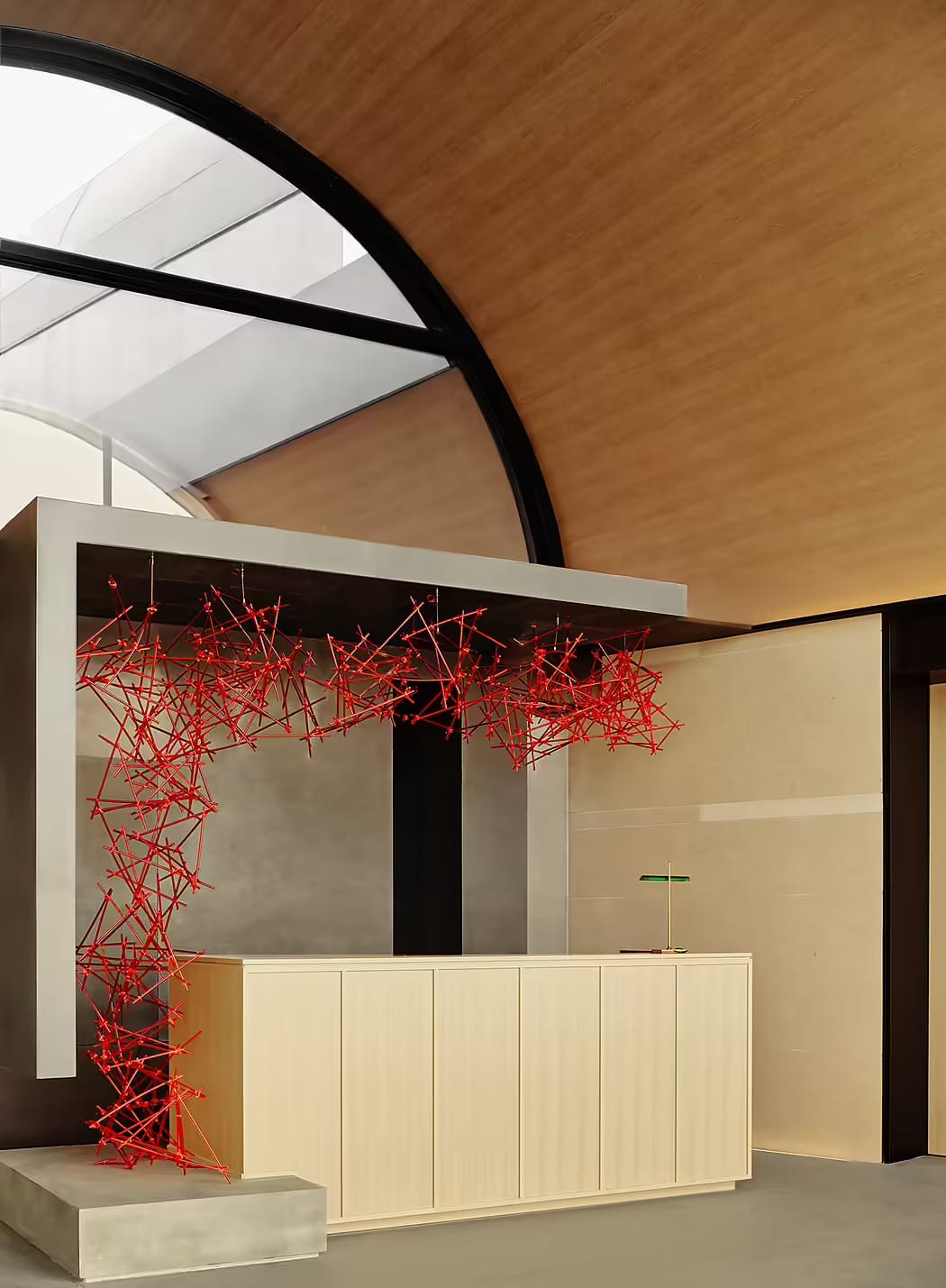
Cultural Synthesis: Reimagining Jiangnan’s Heritage
From Ink Painting to Three-Dimensional Space
Suzhou’s artistic tradition, particularly its classical ink paintings, deeply informed the hotel’s aesthetic. The monochromatic palette of black, white, and gray mirrors the gradations of a brush dipped in ink, while the interplay of void and solid mass evokes the negative space prized in Chinese art. In the lobby, a calligraphy-inspired installation stretches across one wall, its abstract strokes echoing the river’s currents.
Yet this is no mere pastiche. WJ Studio recontextualizes tradition through contemporary techniques: digital modeling ensured roof curves achieved both structural efficiency and poetic fluidity, while parametric design tools optimized solar shading without compromising views. The result is a dialogue between handcraft and algorithm, past and future.
Community and Continuity
Though designed as a retreat, the Boatyard Hotel maintains subtle ties to Shanwan Village. Local artisans contributed terracotta tiles and woodcarvings, infusing the project with regional craftsmanship. Meanwhile, the hotel’s seasonal events—such as moon-viewing ceremonies on the central pier—invite villagers to share traditions with guests, fostering cultural exchange. This symbiotic relationship ensures the hotel enhances, rather than displaces, its context.
The Guest Experience: Navigating Serenity
Rooms as Landscape Observatories
Each of the 36 guest rooms functions as a curated observatory. Beds face floor-to-ceiling windows, ensuring dawn’s first light becomes a natural alarm. Minimalist furnishings—a low platform bed, a woven bamboo chair—cede focus to the outdoors. Bathrooms feature deep stone tubs positioned beside windows, allowing bathers to gaze at herons skimming the water’s surface. The absence of televisions and prominent clocks reinforces a digital detox, while discreetly placed outlets cater to modern necessities.
Culinary Journeys Rooted in Locale
The hotel’s restaurant extends the architectural narrative. Chef Liu Wei reimagines Jiangnan cuisine with dishes that mirror the landscape: silken tofu clouds float in a broth of smoked fish, while crispy lotus root mimics the texture of autumn leaves. Ingredients are sourced from village markets, and meals can be enjoyed in private dining pods perched over the water. At dusk, guests may join a floating tea ceremony aboard a replica crow-top boat, sipping Biluochun tea as the hotel’s lit façade recedes into the twilight.
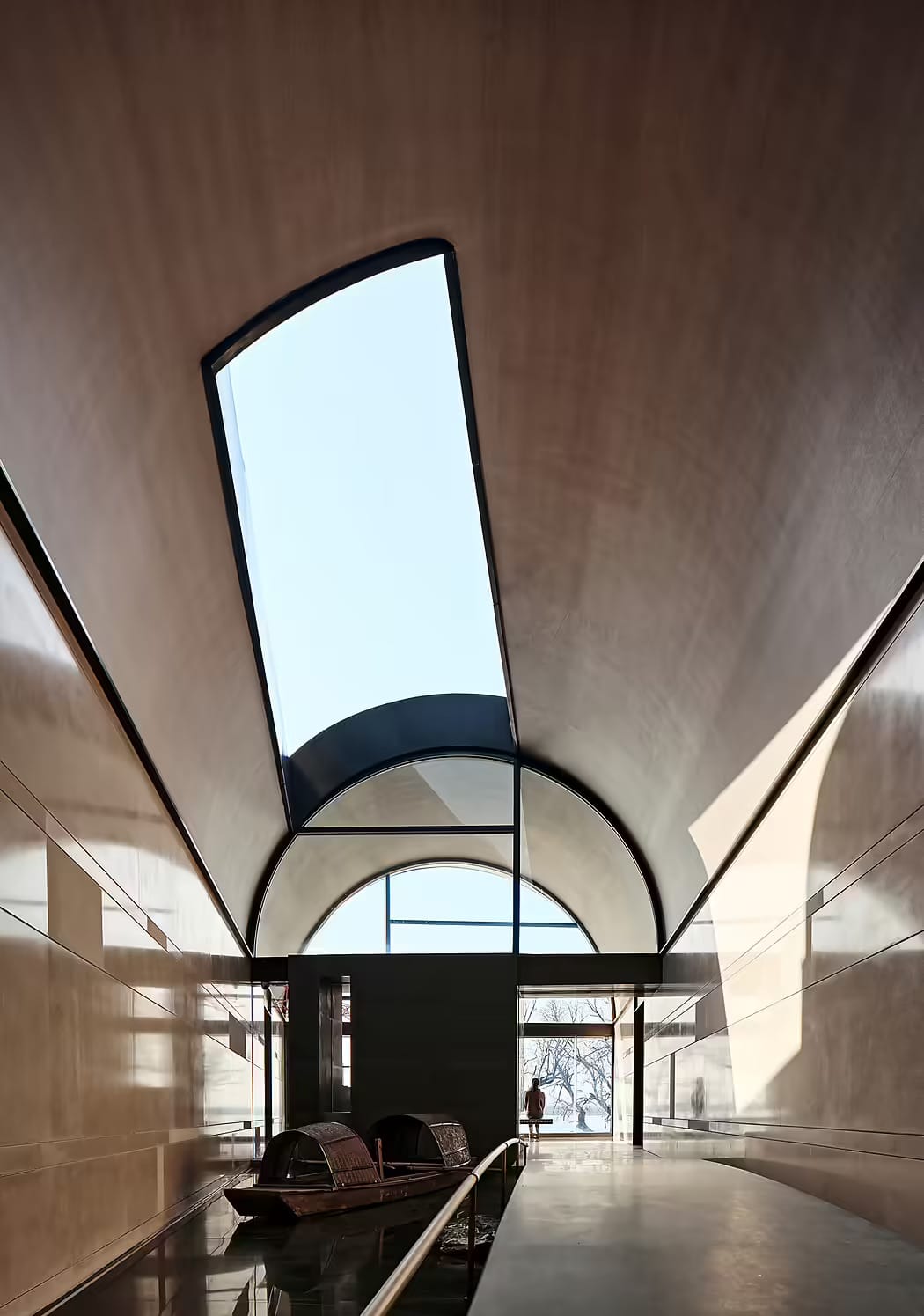
Conclusion: Redefining Retreats in the Anthropocene
The Boatyard Hotel transcends the conventional luxury retreat by demonstrating how architecture can amplify, rather than compete with, natural beauty. Its success lies not in grand gestures but in nuanced details—the way morning mist clings to a roofline, or how a breeze carries the scent of water lilies into a stairwell. For urban refugees and design aficionados alike, it offers a blueprint for living gently within fragile ecosystems, proving that modernity need not erase tradition but can instead breathe new life into it. As coastal cities grapple with rising waters, WJ Studio’s vision—of structures that float, adapt, and honor their context—may well become a guiding star for resilient design.
Link: https://www.wjstudio.cn

